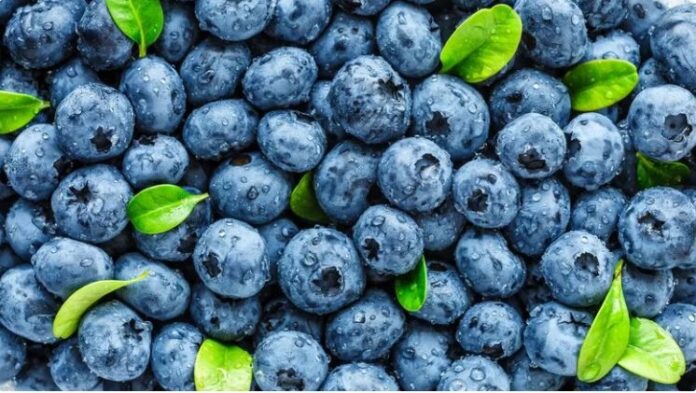Roses are red, blueberries are blue — actually, scientists are saying this isn’t entirely true. You may think you know everything you need to know about blueberries, but you probably didn’t know that these berries only appear to be blue due to a natural wax coating. In fact, according to a 2024 study published in Science Advances, not only does this wax look blue, it reflects ultraviolet light — which human eyes can’t perceive, so you’ll just have to imagine how cool it looks to birds that can. It makes sense, now, why robins always seem to pick out the best blueberries on the bush, because the ripest fruit quite literally glows to their little avian eyes.
The wax found on blueberries isn’t unlike wax found on other blue-ish colored fruits. It’s known as an epicuticular wax, which forms a crystal structure that refracts and reflects light. Have you ever noticed that when you cut a blueberry in half, the middle isn’t blue at all? Neither is the skin, as it turns out; our brains just tell us it’s blue because of how light interacts with the fruit’s waxy coating before bouncing into our eyeballs.
Tom Maxwell
Tue, March 19, 2024 at 3:45 a.m. IST·3 min read
Close-up of many fresh blueberries
Close-up of many fresh blueberries – Bukhta Yurii/Shutterstock
Roses are red, blueberries are blue — actually, scientists are saying this isn’t entirely true. You may think you know everything you need to know about blueberries, but you probably didn’t know that these berries only appear to be blue due to a natural wax coating. In fact, according to a 2024 study published in Science Advances, not only does this wax look blue, it reflects ultraviolet light — which human eyes can’t perceive, so you’ll just have to imagine how cool it looks to birds that can. It makes sense, now, why robins always seem to pick out the best blueberries on the bush, because the ripest fruit quite literally glows to their little avian eyes.
The wax found on blueberries isn’t unlike wax found on other blue-ish colored fruits. It’s known as an epicuticular wax, which forms a crystal structure that refracts and reflects light. Have you ever noticed that when you cut a blueberry in half, the middle isn’t blue at all? Neither is the skin, as it turns out; our brains just tell us it’s blue because of how light interacts with the fruit’s waxy coating before bouncing into our eyeballs.
Spectacular Epicuticular Wax
Close-up of blueberries in a bowl
Close-up of blueberries in a bowl – Love_life/Getty Images
Blueberries develop their epicuticular wax to help protect them; it makes their skins water-resistant while keeping the fruits’ natural water content inside the berries. The epicuticular wax also helps deter certain bugs and bacteria from infiltrating the berries, although, unfortunately, it doesn’t keep rodents and birds from helping themselves to these sweet treats. The wax is formed with irregular crystalline structures that reflect light off the skin of the blueberries, making them appear blue.
As described in their 2024 study, researchers at Bristol’s School of Biological Sciences removed this wax and recrystallized it onto card stock, which enabled them to observe it under a microscope. They found that this wax structure was not actually blue and that it threw off ultraviolet light. The thickness of this wax affects the color of each berry; for instance, you may find that some blueberries have a lighter, more purple or red hue — this is due to a lower concentration of wax.













